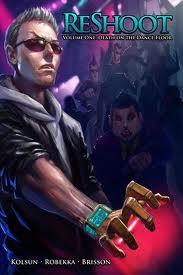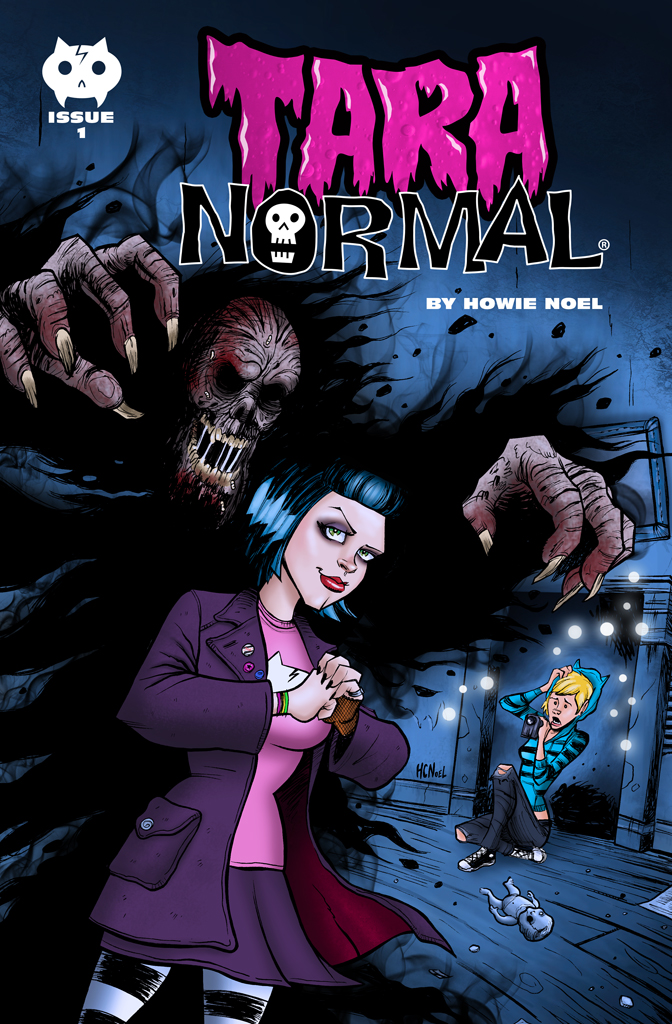
Continuing from part one, in which we hired an artist, now we’re going to need to decide what route we want to take. Should you seek out a publisher or decide to market and publish your work alone? Keep in mind, publishing yourself this day and age could very well lead to being picked up by a publisher.
If you want to seek out a publisher, most commonly asked for is a one page synopsis of your overall story, a cover, and five full sequential pages, both in pencils and inked and lettered. A couple of the big name publishers don’t even take submissions, but there’s plenty more out there to chose from that do. I know this is common knowledge to some, but there’s a lot of potential writers out there who aren’t joining the comic market due to not knowing the procedures.
Here’s a good list for comic book submissions.
Now keep in mind, comic book creators often have to front the cost of publishing themselves. Even if you’re picked up by a publisher, you’re going to have to pay for printing costs, which will probably be an extra thousand or so at the least.
Is this beginning to sound expensive? 
However, having a publisher behind you means your work will be spread to a large market. You’ll have their marketing team for you, and your comic will have that bright seal of approval from a publisher that makes it look so official. Think of like a lot of money up front, for a better possibility of a greater return in the future.
And if you don’t get accepted, you’ll have five pages, a cover, and a synopsis of your story. Just what you need to launch your own marketing plan.
That brings us to those who want to go at it alone.
You have to market your own book, which means you need to have a marketing campaign. I know, we want to talk about comics, but if no one knows who you are, they’re certainly not going to even get to read your comic. This means, either have a lot of friends in real life, or sign up for all the social networking sites and start interacting with people who share your interests.
This could mean giving back by writing for a site like Comic Booked or providing guest posts on other blogs. It’s now up to you to spread the word about your comic, and chances are, people aren’t going to want to look at it as much as the other comics, who are published by companies they know and trust.
Make it easy for people. Develop a couple of pages that describe your story, show off your images, and then send it into sites that will post press releases.
 One of the biggest advantages to going it alone is that you don’t have to pay the publishing costs. You’ll also retain all rights to your work (some publishers like Image will allow creators to retain rights and even help them choose the level of marketing investment). You can put your comic up on a print on demand service like IndyPlanet. All you’ll have to pay for is the first print that they’ll make the source file from.
One of the biggest advantages to going it alone is that you don’t have to pay the publishing costs. You’ll also retain all rights to your work (some publishers like Image will allow creators to retain rights and even help them choose the level of marketing investment). You can put your comic up on a print on demand service like IndyPlanet. All you’ll have to pay for is the first print that they’ll make the source file from.
Once you’ve decided which way you want to go, you’re going to need to start to create your comic! This is one of the most frequently asked questions in regards to that, “How does the artist know what to draw?”
Think of it in the process of movie making :
You’re the director. You write your script. (I simply use Celtx. It’s free, and it has a comic book script option).
You keep this script simple and to the point. You give the script to the people who are going to make it (in this case, the artists).
 Then you direct them. Email them, talk to them, however you want to do it, but go into detail about the scene. Break the scene apart into what we’re seeing. Paint a picture with your words. I like to tell them the important parts of what we’re seeing, and then give them the freedom to illustrate it how they want it. It’s similar to how directors like to give actors room to bring their own take on a scene.
Then you direct them. Email them, talk to them, however you want to do it, but go into detail about the scene. Break the scene apart into what we’re seeing. Paint a picture with your words. I like to tell them the important parts of what we’re seeing, and then give them the freedom to illustrate it how they want it. It’s similar to how directors like to give actors room to bring their own take on a scene.
For ReShoot, Robekka Studios sent me multiple versions of the work in which I would approve/send back for revisions. First, a rough sketch of what it would look like in pencils. Then they’d send it back inked. After that, they’d send it back colored. Once again, approve, or send back. This went on for each page until we had a full comic.
In part three, I’ll be discussing what happens when your comic is finished. Just a few things on the list to do : copyrighting, and formatting. In many ways, there’s just as much work to be done after the inks are done.
For those published, I’m interested in why you chose that publisher, or why you chose to go it alone?















I think what's being overlooked here is self-publishing digitally. With Power Play we're doing it all ourselves and rather than pitching it to a company right away, we're putting it out ourselves with Comixology. Then once we build an audience we can have more leverage when approaching publishers, as well as gaining a stronger foothold in a brand new market that they themselves aren't even touching just yet: original digital content that is brought to print to serve that market secondary. But glad you're putting out articles like this. The process needs to be discussed and de-mystified.
Yes, I did forget to mention digital in my post! I definitely agree it shouldn't be overlooked. When I talk publishing, I'm not simply talking about traditional print. Whatever it takes to get it out there. The more people that are interested in you and you work the better!
Hi John,
I am currently in the process of writing my script and I saw that Robbeka is the artist you used. I checked them out and they have the skills that I need to make my story come alive, so I was wondering what kind of contract did you set up with them. Im not asking for numbers just general stuff: Was it on a per page basis, a flat rate for the whole issue, or did they ask for a percentage of the project? Thanks a lot.
Abel